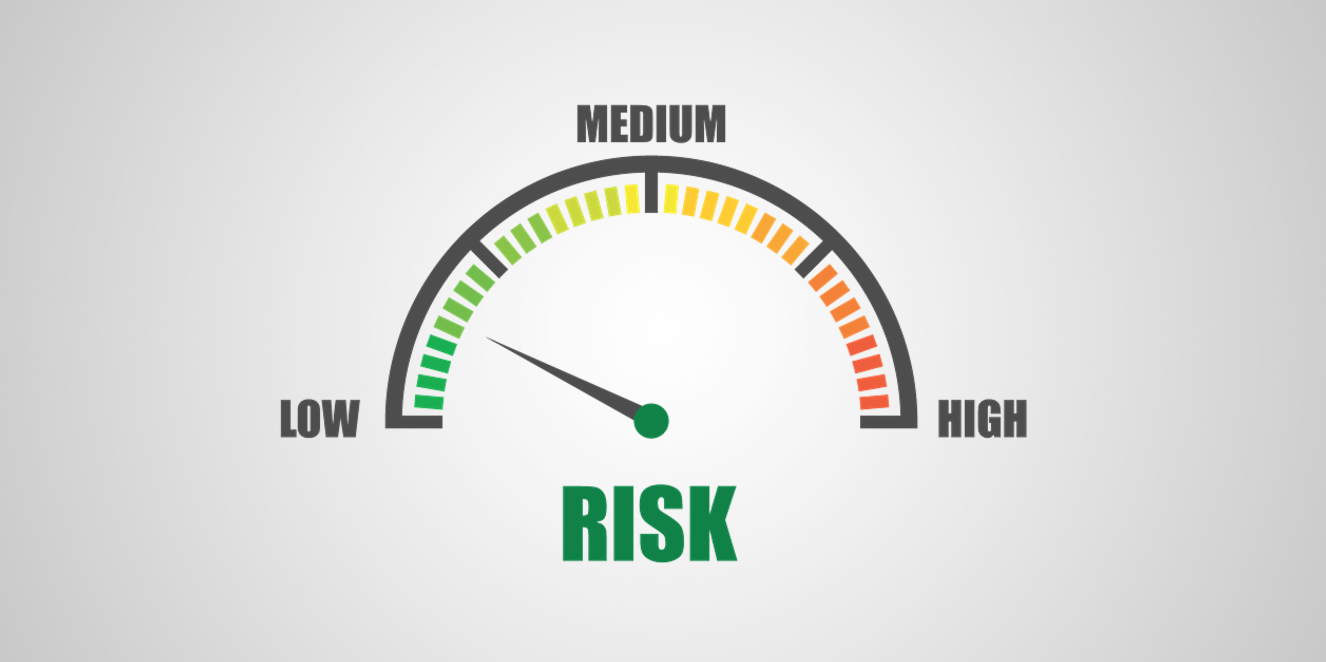Contents
Employee-Engagement and Satisfaction
Customer Service and Retention
Introduction
A great business coach I know once told me that “Your business can only talk to you in numbers” and as an accountant I can tell you how reassuring that is because one of my biggest frustrations is the lack of focus on this fact that your average small business has.
In this article I’m going to explain the importance of having key performance indicators and key performance actions to understand. Further on we we also discuss why it’s vital for a business to focus on financial and non financial objectives as well and also the challenges with overdoing it.
Before you continue reading…
Our clients enjoy these things as standard:
- Three working hour response time for queries
- Fixed monthly payments and any ad hoc fees pre-agreed
- Full UK based team in the office 9-5 Monday-Friday
- All-inclusive tax planning and software support
- Free representation in the event of an enquiry
What are KPI’s?
KPI stands for Key performance indicators, and they are a metric or in other words something you chose to measure in the business to help you understand how well that part of the business is doing and whether you’re on track to achieve your business goals.
If you’re in the process of scaling your small business, then you will probably have a plan in place with overall business goals you want to achieve and with any good commercial objective you have to use the SMART system when setting it. The M stands for measurable, so as part of the target setting activity it is essential to work out which numbers you want to focus on to measure performance.
When to use key performance indicators
Utilising KPIs is often a very introspective consideration for a small business and they tend to focus on studying historic performance in order to understand future trends and create actionable feedback for the team and the board. Only so much can be achieved by looking backwards, but it is still an important starting point and directors often skim over the management information every month when deciding where to focus their efforts.
What happens to businesses that don’t use KPIs
The challenge with not having KPIs in your business to track progress is that as a business scales up the small business owner gets further away from the operations and without a system in place backed up by solid reporting tools, the management of the business comes down to trust in the team.
While it is important to be able to trust your team, especially if you have put measures in place to retain them and create a low employee turnover rate, the reality is that people will let you down and you will need a system to be able to identify quickly, when performance is indicated so you can deal with it. This is critical to maximise the average customer lifetime value.
Don’t just take my word for it, as a chartered management accountant I’m part of an institute that has written some great content on the topic. Key performance indicators can be divided and categorised in many ways and after often presented in the context of being leading and lagging indicators, which can refer to if they indicate future performance or past achievements.
They can also be subdivided into strategic KPIs and operational KPIs, which look at the business overall or separate departments in isolation, one of the best KPI examples out there at the moment is the net promoter score which looks at customer loyalty and predicts future growth based on that.
Delegation vs. Abdication
The challenge that most business owners have is that they are not delegating effectively as they grow their businesses and this leads to one of two issues. Firstly it might be that they aren’t effectively using their teams and they themselves are still heavily involved in the day to day. This can be a disaster as they can’t focus on the overall business strategy and will be distracted to the point they don’t recognise the external threats and opportunities because they are looking inwards.
Why trust just isn’t good enough
The second challenge is that they might be running their business purely on trust and aren’t providing any oversight to their teams, this is known as abdication and results in work being passed down without anyone being held accountable for its satisfactory completion. Abdication is a nightmare for a growing business because it results in the operations deviating from the agreed strategy and procedures with a considerable impact on customer satisfaction rates and quite often business failure soon after that.
Based on my points above, the similarity between Delegation and Abdication comes down to the fact that they both relate to an entrepreneur passing working on to other members of their team, however the main difference is that delegation is about creating accountability in the team and not transferring responsibility as a manager or leader.
To delegate effectively you need a system to measure the success of your team and their actions, which is where a key performance indicator can play such a big part in business growth. Abdication is about passing the responsibility and not holding anyone accountable or even following up to ensure the plans are carried out.
What are KPAs
Key performance actions are just as important as key performance indicators because they are forward looking and consider the actions needed to achieve organisational objectives. A great example of this when considering marketing, the obvious KPIs like leads generated, cost per marketing qualified lead, conversion rate and average purchase value per customer are not necessarily helpful when instructing a member of your team.
It’s not going to achieve a great deal by to just telling a staff member to increase their conversion rate, you will actually need to give them the actions to take, for example follow up 10 times to give your sales qualified leads the best chance of converting, or connect with them on 3 marketing channels so your are constantly visible to them.
KPIs look at past performance and can help to shape the key performance actions needed going forward to drive the business objectives, they are a great quantifiable measure of how successful a strategy was, but overall are pointless unless action is taken from the learnings.

How an accountant can help you manage your key performance indicators
A good accountant will help you select the right key performance indicators for your business and they will breakdown into several areas of business metrics which look at both strategic KPI’s as well as operational KPIs, I’ll cover them further down but here’s a really good article outlining many of the common ones.
The key thing to remember is that a key performance indicator requires data to be collected and recorded in your business and as a result chartered accountants go through a lot of training to recognise how this information can be collated efficiently.
Not all KPIs are equal
I’ve recently been working quite closely with a client of ours in Northampton who introduced me to an amazing book called Good to Great by Jim Collins and it talks about how some of the best companies of all time have one KPI that trumps them all called the Common Denominator. It’s a really important concept because any good accountant who specialises in financial management will be able to tell you that sometimes too much information can be worse than not enough.
Key performance indicators take time, effort and resources to compile and as a result careful thought needs to go into which metrics you want to track as most businesses are limited in terms of accounting resources, but overall the decision to measure KPIs is a no brainer and must be made by any business that is serious about growth and attracting new customers.
Don’t just pick the first ones you hear about
Selecting the most common key performance indicators which you’ve found in a text book or on a website isn’t always the best approach, because your business may have it’s own unique strategic goals. Where possible you will also want to select key performance indicators which have multiple purposes, for example looking at average order value can be an indicator of volume sold but also pricing and mix of products.
Done is better than perfect
While focusing on a broad key performance indicator isn’t always the most helpful way to pin point specific issues, but for many small businesses that have to ration their management information it can be the most economical way to identify the general area an issue resides as a starting point for further investigation.
This article is about financial metrics and the non financial ones as well, but I’m specifically going to focus on how they apply to small businesses with 5 – 20 staff members as the general ones have been covered extensively by others.
KPI Dashboards
While selecting the right key performance indicators is important, it is also completely vital that these metrics are presented in the right way. Reporting needs to be done with ease of use in mind, because this is the one way to ensure that managers will utilise the information to make a difference. While board report packs for directors are usually several pages long, the most important parts are usually the dashboards at the start which give a top level overview on the most important metrics.
KPI dashboards are often displayed as a collection of graphs, charts and stand out numbers to draw attention to the metrics that really count. A good KPI dashboard can be a work of art and usually requires a skilled chartered management accountant to put it together.
There are also more examples of reporting software available now like Float and Futrli which help professionals achieve better results with less effort, which means that possibly for the first time in history management information and key performance indicator tracking is now affordable for most small businesses.
SMART Objectives
Whenever an objective or business goal is set, it must be in the context of the SMART KPIs system for it to have any chance of success and careful thought needs to go into whether it should belong in the businesses KPI report.
Specific – a detailed outline of exactly which outcome is desired and what success will look like when it’s achieved. Is it a 10% increase in net profit margin for example?
Measurable – what metric can be measured to track the progress of the goal, is it the net profit margin?
Attainable – can the objective be achieved in a practical way?
Relevant – does the objective fit in with the overall strategy of the business, for example if the business is focused on retaining existing customers, will focusing on net profit margin achieve that?
Time – when is the objective meant to be achieved by? This is really crucial in being able to allocate the right resources to the venture.
The Common Denominator
The ultimate key performance indicator is called the common denominator and while it’s not easy for a business to discover, it is certainly worth the effort. The common denominator is the one business metric that is completely aligned to the companies vision and values and gives an overall indicator to how successful the business is.
The common denominator is rarely a financial KPI and usually is very broad in it’s scope. A great example of this would be for a small business which is completely focused on providing the best customer experience, you could measure the percentage of existing customers that return or perhaps even better the percentage that recommend the business to a friend.

Financial KPI Examples
For this section I want to start with the most important for a small business in order, however this can really vary depending on the industry and nature of the products and services. Accounting professionals train to advise clients on all of these and help them select the most appropriate ones for their situation, which is why it’s essential that you use an accounting firm with qualified chartered accountants.
Business Value
Ultimately for many people in the working population, the idea of retirement is a fantasy which very few of them will ever be able to afford, which is why this is the most important metric of them all. If you’re relying on your business to be sold one day or at least having it run without you in it, then focusing on the sale price of your business is the key to achieving that goal. Even if you never plan to sell your business, the value is still the best indicator of it’s quality.
Net Profit
Ultimately in business you will need to ensure that you’re consistently profitable or you will eventually run out of cash and the business will be worthless. Profit feeds into the business value calculation and building a solid business around a focus on increasing annual recurring revenue is the best way to achieve the highest valuation.
Net profit can also be related to EBITDA (earnings before interest, tax, depreciation and amortisation) which is the common KPI larger businesses and investors use, but for small businesses it can be unnecessary.
Gross Profit Margin
Gross profit margin will help you understand if your pricing strategy is working and whether or not the mix of products you’re selling is right.
Monthly Recurring Revenue
For businesses that are subscription based this can be really important because it can help them understand how much money they have to reinvest in their growth and give a good indicator of the value of the business based on industry expectations. Revenue growth is often a key driver in a businesses strategy
Cash flow
Cash flow is the life blood of a small business and can be a great performance measurement when it comes to KPI reporting. The key performance indicators to consider are the bank balance, which should have a range set for it to be optimal as having too much cash can also be an issue, as it represents lost opportunity just sitting there.
Other important cash related key performance indicators are linked to how much money the business is owed by it’s customers and also what it owes it’s suppliers. Measuring things like gearing, debtor and creditor days and overdue invoices and bills can be very relevant. While usually more relevant for larger organisations, even considering thing like your equity ratio can be an import feature in a small businesses KPI reports, especially in scenarios where there is a certain amount of debt linked to the business.
Staff to Turnover Ratio
What percentage of your revenue is made up from staff costs? This is really important for businesses where there offering is less a physical product and more a service. It can be a great indicator of if your pricing is right or if your team is efficient enough.
Financial KPIs Relating to Sales and Marketing
It’s really important for a small business to understand its cost per lead and also cost per customer, especially if it’s objective is to scale up. Ultimately the growth of a business requires investment in marketing and sales and having these key performance indicators available makes it much easier to set budgets and make the right decisions on raising funding and the timing of projects. Even looking at customer lifetime value can be hugely helpful when deciding how much money you’re willing to spend to acquire marketing qualified leads.
Non-financial KPI Examples
The non financial key performance indicators break down into several areas which we will now cover, it’s worth noting that these can sometimes be the most important ones as they often relate to reputation and external perception.
Effective vs. Efficient
Most entrepreneurs struggle with the difference between what might be the two most used words in the business vocabulary but ultimately efficiency is about doing something really well and effectiveness is about doing the right thing in the first place.
Tracking KPIs and using them to make impactful decisions in business requires a thorough understanding of which one of the two is relevant in any context and when seeking to develop KPIs businesses must be aware that it’s possible to underperform on strategic metrics, even when the operational ones appear to be successful for this very reason.
Conversion Rates
Sales key performance indicators related to conversion rates focus on what percentage of leads make it on to the next stage in the sales and marketing process, for example what percentage of people viewing an advert with pick up the phone or get in touch with your business.
Or perhaps after attending a sales meeting, what percentage of prospects will go on to buy from you. Having a good understanding of these metrics can really help you understand your sales pipeline and future revenue, as well as drive key performance actions around the volume of activity needed to achieve your goals.
Marketing KPIs
Other numbers to focus on can revolve around the number of reviews your business receives or even the average quality of those reviews and if you run the type of business where your digital presence is really important then it’s worth tracking things like the number of backlinks built or the mentions you receive on various marketing channels.
Leading and lagging indicators
These are usually known as leading indicators as they are more about the future potential of the business and can often be far more helpful than backward looking lagging indicators which only let you learn from historical performance.
The importance of understanding conversation rates has been identified by many companies providing CRM software which makes it much easier to track and will even connect to your analytics so you can measure progress and track KPIs on things like monthly website traffic.
Tracking marketing KPIs can be an important factor in understanding the overall customer acquisition cost for taking someone from being a marketing qualified lead to a new customer and the average conversion time it took to do it. This is one of the most important leading KPIs to focus on and every KPI metric strategy should include it as part of a KPI dashboard.

Employee-Engagement and Satisfaction
How valuable is your team?
Key performance indicators relating to human resources definitely need their own section in this article because team management and success is such a critical success factor when maximising the value and effectiveness of any organisation. Potential buyers will look at the retention rate and quality of your staff members and there are even review sites where potential team members can research your business, so being proactive about your people strategy is an absolute must.
Morale Matters
By concentrating more on employee satisfaction, businesses can create a work environment of loyal and engaged employees. Not to mention with an increase in employee morale comes better effort and attendance.
Also, when you aim to enhance the work environment for employees, it shows that you care about them more rather than simply making profits. Objectives related to employee engagement and satisfaction usually involves appreciating exceptional work, giving employees greater responsibility, promoting teamwork, creating a positive workplace and interacting openly.
Indicators of an underlying issue
There are several employee related key performance indicators that monitor the overall levels of engagement and happiness within your team, for example you could look at absenteeism, average staff retention time, training completed and even the average pay of your workers compared to the industry standards.
In a more direct capacity a relevant key performance indicator could be the number of complaints filed and also health and safety numbers in terms of the incidents reported. Ideally you would manage the more indirect ones before it got to the stage where there were severe issues in the business, but sometimes KPI reporting must focus on fighting fires in the hope that one day the business can get far enough ahead that it can switch to proactively using KPIs to grow.
Customer Service and Retention
Why every business should focus on customer retention
Being one of the most important non-financial aspects of a business. Providing customers with quality products and services is not enough. You must aim to provide them with a positive experience every time they interact with your business. When the customer feels valued, it encourages them to give your company additional business in the future. Customer satisfaction can be improved through employee training and by setting high expectations. You could monitor employee interactions with customers and identify areas that can be improved.
How to collect customer focused data
You can assess the level of customer service that you currently provide by carrying out surveys and informal conversations with employees, thus recognising areas that can do with a bit of improvement. However it is also possible to measure customer engagement through reporting on metrics such as average customer retention time, how many times they buy from you and most importantly the amount of times they refer you to their friends. I’ve heard of businesses where their motto is “A referral from every customer, and every customer from a referral”
There’s money in doing it right
Ultimately one of the key considers of a potential buyer looking to take over your business is how loyal are the customers and being able to demonstrate longevity of your client base can add a huge amount to your business valuation.
But that’s not the only reason to focus on customer satisfaction when setting KPI targets, because happy customers relate to happy team members and more profitability so there are many short term benefit beyond just the equity side of things. Even the impact that a referral has on your sales KPIs for example can’t be underestimated, as personal recommendations make conversions far easier than for your average marketing qualified leads.
Productivity
Sometimes everything else is just not enough
Having a great team and great customers will only get you so far, ultimately for any business to be profitable and successful it has to achieve mastery over fulfilling those orders and delivering its solution. Businesses often under estimate how important it is to get the best value out of the resources they have, and being able to track key performance indicators to understand if team members are performing well and getting results for the hours they work is vital.
It’s not always about laziness
With all the will in the world people in your business will always need coaching and management to deliver the best results, in addition it’s not always a knowledge issue and using KPIs to understand the constraints in the business and allocate expenditure to focus on automation or training can lead to excellent long term results and improvements.
Summary
Most businesses don’t have KPIs but this is an area you definitely don’t want to follow the crowd as failing in business is normal and you have to do something different to succeed. When you consider that only one in six people who work for themselves are actually business owners and then only 0.2% of those business will ever be sold, it’s worth considering what that small minority have in common.
The idea of introducing key performance indicators into your business can be daunting as there as so many to chose from, which is why there it can be hugely beneficial to take it slow and just implement a couple at a time. Starting at the top level and drilling down gradually is the way to proceed if you have limited time and resources, and just remember that there is no right and wrong answer, they only thing that counts is how you sue the information.














